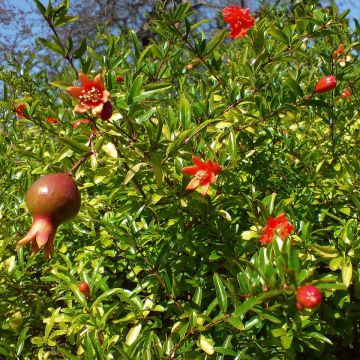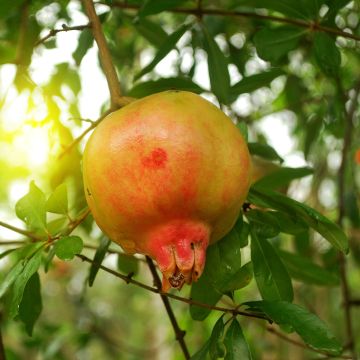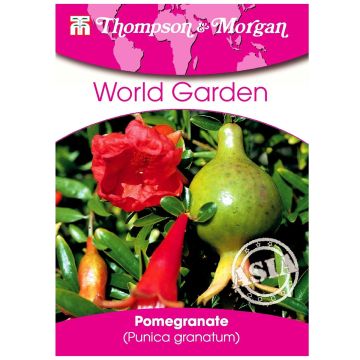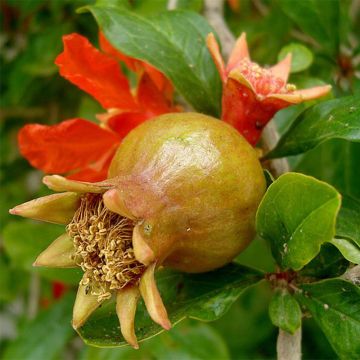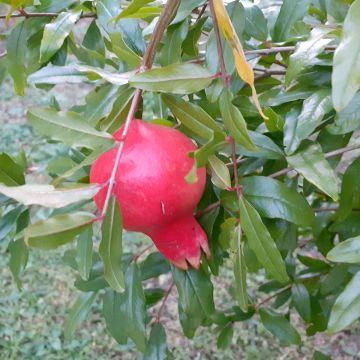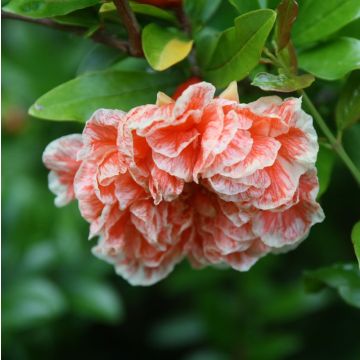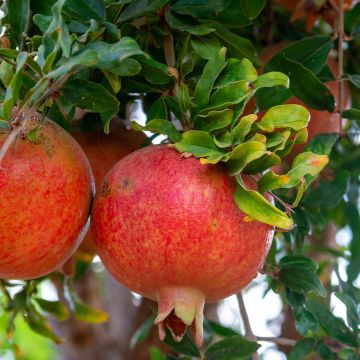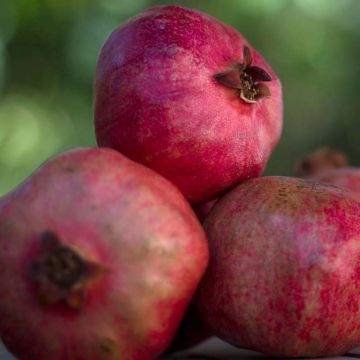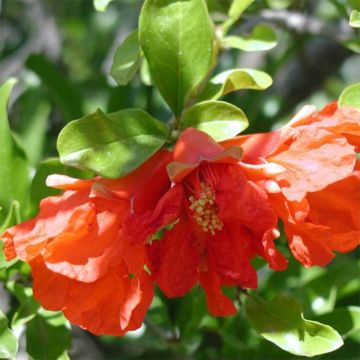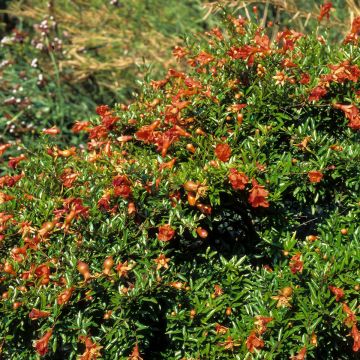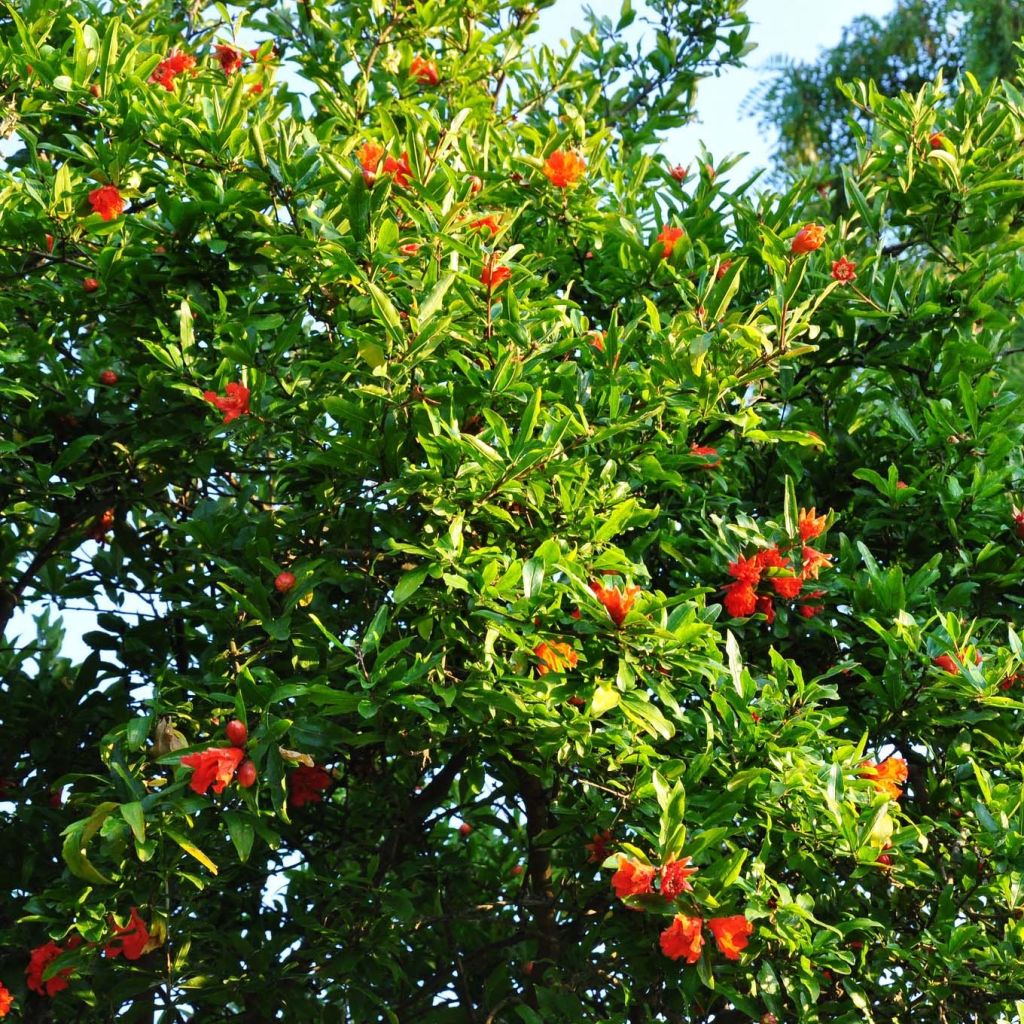

Punica granatum Fina Tendral - Pomegranate
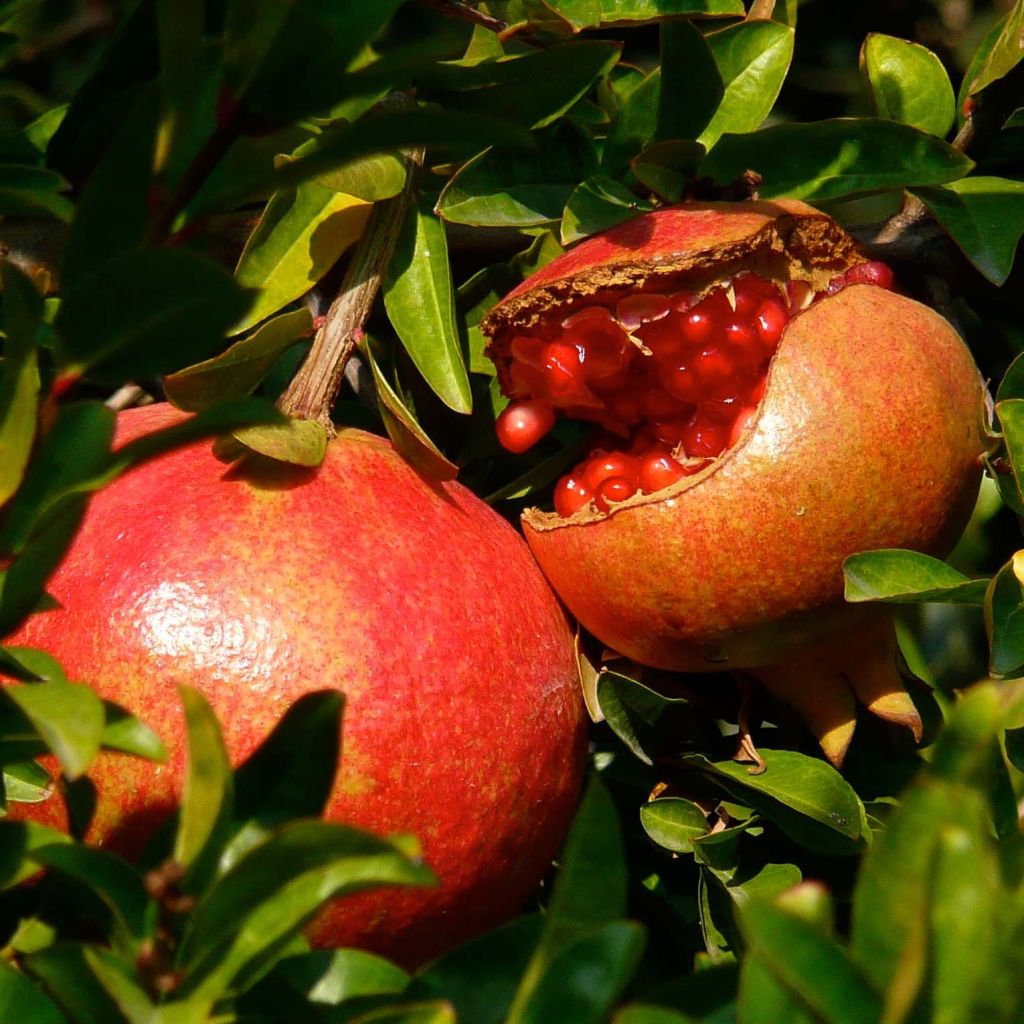

Punica granatum Fina Tendral - Pomegranate
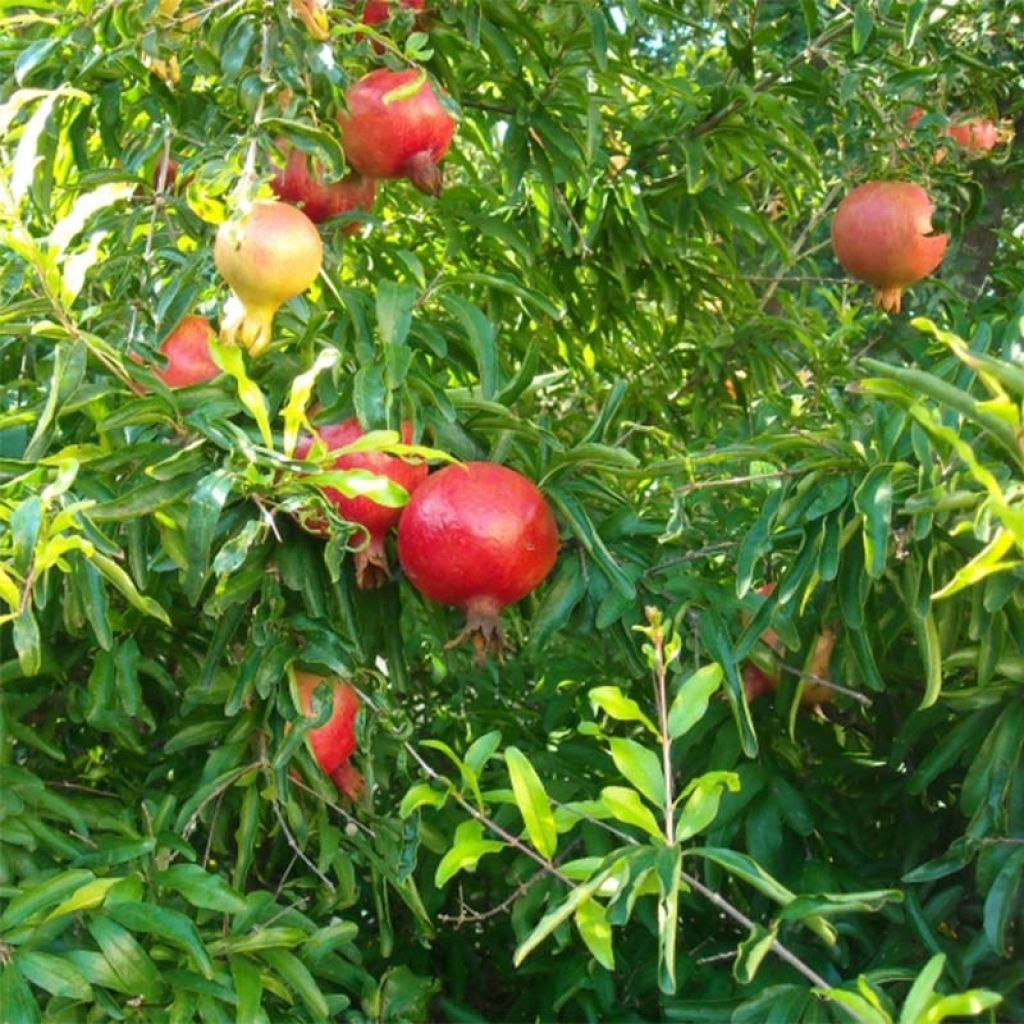

Punica granatum Fina Tendral - Pomegranate
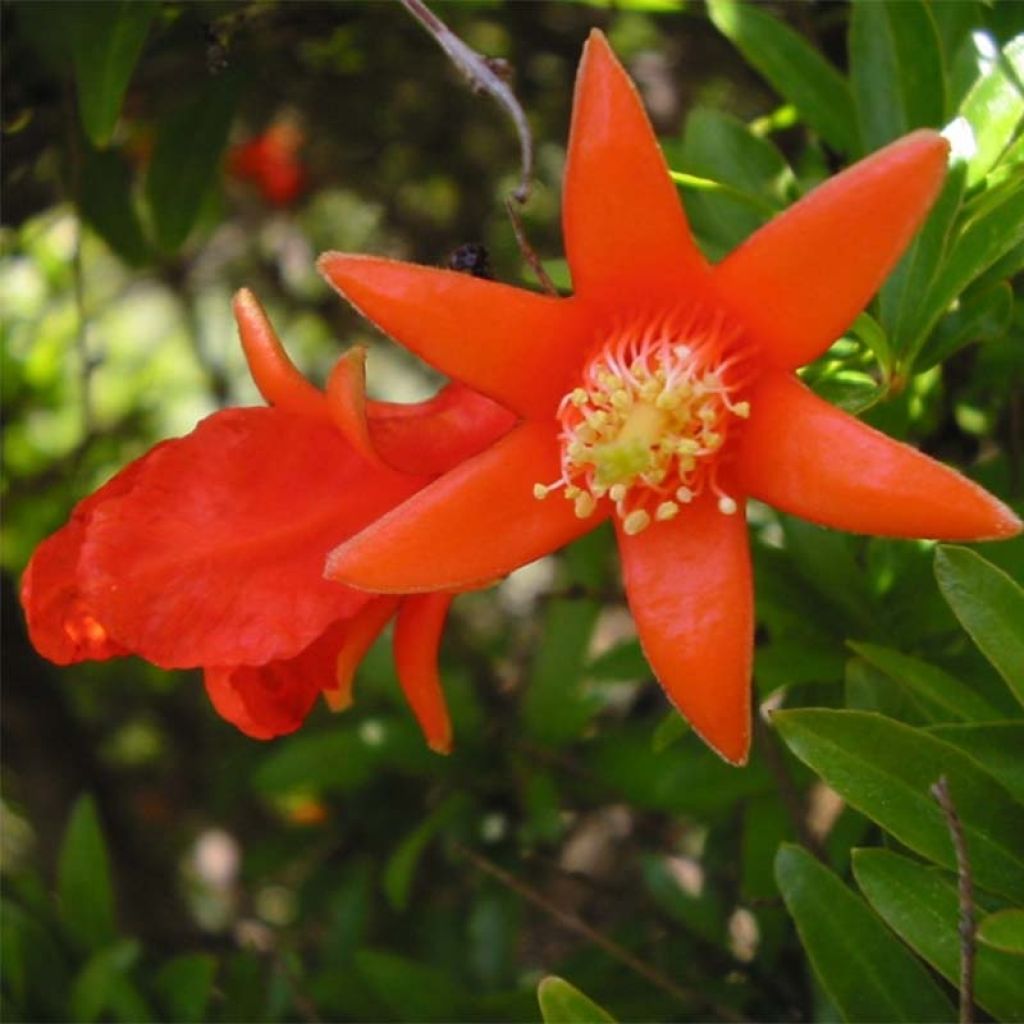

Punica granatum Fina Tendral - Pomegranate
Punica granatum Fina Tendral - Pomegranate
Punica granatum Fina Tendral
Pomegranate
Hello, it's the third time I leave reviews but they never show up except this time. That being said, my little pomegranate tree has successfully completed its journey, it arrived in good health, it is now in its place, I am just waiting for its progress. I am very satisfied with this website, which I take the opportunity to praise. I prefer this system to leave a review. So, have a nice day and many more purchases that won't be a promise of flowers.
Sonia, 24/05/2023
This item cannot be shipped to the selected country
Delivery charge from €5.90
More information
Schedule delivery date,
and select date in basket
This plant carries a 6 months recovery warranty
More information
We guarantee the quality of our plants for a full growing cycle, and will replace at our expense any plant that fails to recover under normal climatic and planting conditions.
From €5.90 for pickup delivery and €6.90 for home delivery
Express home delivery from €8.90.
Description
Punica granatum 'Fina Tendral' is a variety of pomegranate tree known for its exceptionally large fruits with excellent taste, and almost seedless. The beautiful bright orange, crumpled flowers of this small tree are also very decorative in summer, as is its golden foliage in autumn. It is a rather cold-resistant cultivar, but requires a long and hot summer to ripen its fruits, in late October or early November in warmer regions. This fruit tree can be planted all year round (except during frost), but preferably in autumn, in any deep and well-draining soil, even relatively dry.
The Fina Tendral pomegranate tree is an old cultivar possibly of Afghan origin, widely planted in Spanish orchards for large-scale fruit production. Its ancestor, the Punica granatum, is a small tree or large bush of the Lythraceae family, related to the purple loosestrife (Lythrum salicaria) which is so common near watercourses. It originates from a vast region covering Southeastern Europe and extending eastwards to the Himalayas. It is a species with a long lifespan, capable of living up to 200 years.
'Fina Tendral' initially forms a clump of thorny and tangled branches in its youth, showing rather rapid growth until maturity, which does not occur before the age of 5-6 years. The mature plant develops at a much slower pace, forming a small tree at least 4 m (13 ft 1 in) tall and 2.50 m (8 ft 2 in) wide, with a spreading and rounded habit after a few years. From a clump, it can become a tree, if care is taken to prune the lower branches, standing on a twisted trunk reminiscent of that of olive trees.
Flowering occurs in abundance in June-July, and then more sporadically throughout the summer. The flowers measure about 4 cm (1.6 in) in diameter. They are composed of crumpled petals of a beautiful orange tinged with red, emerging from a thick, waxy-textured calyx that already evokes the future pomegranate. The pomegranates produced by this variety can weigh more than 800 g if the tree does not lack water in late summer-early autumn. Their thin skin, yellow, tinged with pink-red when ripe, contains large, juicy and sweet red kernels, with a mild flavour, containing a few small, flexible seeds that are easy to swallow. The deciduous foliage is composed of small, thick, shiny, bright green oval leaves. They emerge bronze to purple in spring and turn golden yellow before falling in autumn.
A symbol of abundance like its emblematic ancestor of ancient civilizations, the Fina Tendral pomegranate tree is a magnificent subject to plant in a warm, isolated location. Hardy down to -13 /-15°C (5 °F), it will easily grow wherever olive and fig trees can thrive in a well-sheltered location. But its superb fruits generally only reach maturity in southern regions. It can also be used in a large Mediterranean fruit hedge, associated with Osage orange, bitter orange, a small fig tree (Dalmatia, Dorée), a Japanese medlar, etc.
The city of Granada, a crossroads of Arab and Andalusian civilizations, located in southern Spain, owes its name to the presence of the pomegranate tree, brought by the Moors and widely planted in the mythical gardens of the Alhambra palace. This tree also adorned the Hanging Gardens of Babylon and the Romans discovered it in Carthage, naming it the Apple of Carthage.
Report an error about the product description
Punica granatum Fina Tendral - Pomegranate in pictures


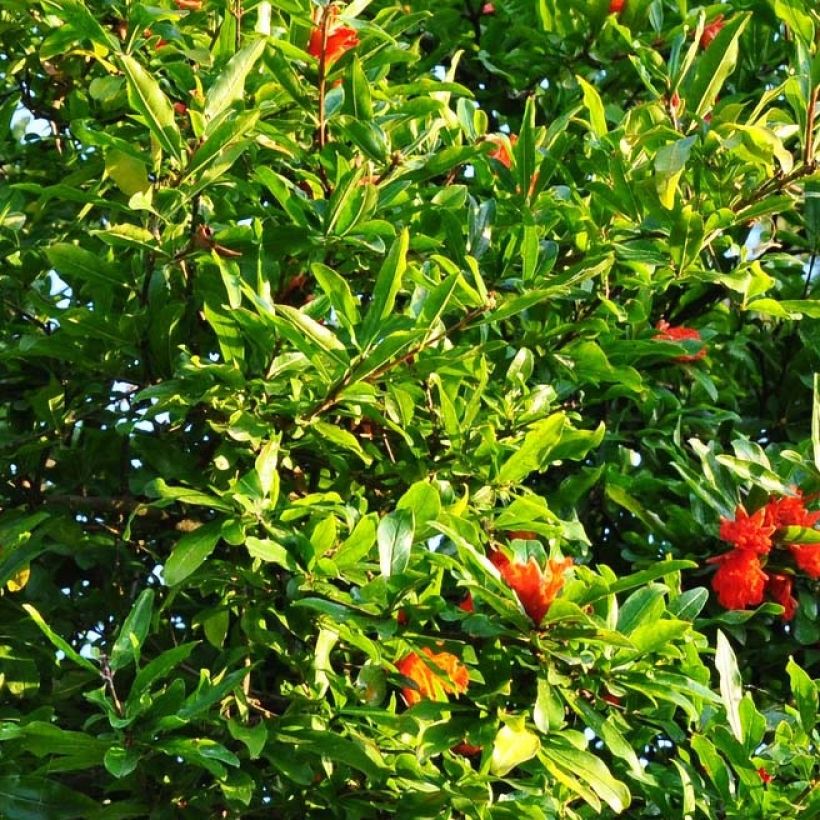

Plant habit
Fruit
Flowering
Foliage
Botanical data
Punica
granatum
Fina Tendral
Punicaceae
Pomegranate
Cultivar or hybrid
Other Punica - Pomegranate
Planting and care
We recommend planting Punica granatum Fina Tendral in spring, when there is no longer any risk of frost, in cool regions, autumn in hot and dry climates. Place it in a very sunny and sheltered location, or in partial shade in hot climates, in a deep, well-drained soil, even if it is limestone. It is very drought-tolerant once established and can handle arid conditions, but it will only reach its full potential and bear abundant fruit in soil that is sufficiently moist at depth. It is resistant to sea spray. Monitor watering during the first two summers. It will benefit from compost and a thick layer of dead leaves, especially during the first two winters in slightly colder regions. Pruning in early spring is not essential, but it can help shape the plant into a small tree with a single trunk or a nicely formed habit with 3 or 4 trunks: keep the most vigorous stem(s) and remove the others. In the following years, systematically remove any branches that grow on the main trunk(s) until the desired height is reached.
The pomegranate tree does not have any specific enemies; it is a very robust species. Some scale insects may settle on it, but they do not cause significant damage to the tree.
Propogation is done by hardwood cuttings in winter or herbaceous cuttings in spring.
Planting period
Intended location
Care
-
, onOrder confirmed
Reply from on Promesse de fleurs
Haven't found what you were looking for?
Hardiness is the lowest winter temperature a plant can endure without suffering serious damage or even dying. However, hardiness is affected by location (a sheltered area, such as a patio), protection (winter cover) and soil type (hardiness is improved by well-drained soil).

Photo Sharing Terms & Conditions
In order to encourage gardeners to interact and share their experiences, Promesse de fleurs offers various media enabling content to be uploaded onto its Site - in particular via the ‘Photo sharing’ module.
The User agrees to refrain from:
- Posting any content that is illegal, prejudicial, insulting, racist, inciteful to hatred, revisionist, contrary to public decency, that infringes on privacy or on the privacy rights of third parties, in particular the publicity rights of persons and goods, intellectual property rights, or the right to privacy.
- Submitting content on behalf of a third party;
- Impersonate the identity of a third party and/or publish any personal information about a third party;
In general, the User undertakes to refrain from any unethical behaviour.
All Content (in particular text, comments, files, images, photos, videos, creative works, etc.), which may be subject to property or intellectual property rights, image or other private rights, shall remain the property of the User, subject to the limited rights granted by the terms of the licence granted by Promesse de fleurs as stated below. Users are at liberty to publish or not to publish such Content on the Site, notably via the ‘Photo Sharing’ facility, and accept that this Content shall be made public and freely accessible, notably on the Internet.
Users further acknowledge, undertake to have ,and guarantee that they hold all necessary rights and permissions to publish such material on the Site, in particular with regard to the legislation in force pertaining to any privacy, property, intellectual property, image, or contractual rights, or rights of any other nature. By publishing such Content on the Site, Users acknowledge accepting full liability as publishers of the Content within the meaning of the law, and grant Promesse de fleurs, free of charge, an inclusive, worldwide licence for the said Content for the entire duration of its publication, including all reproduction, representation, up/downloading, displaying, performing, transmission, and storage rights.
Users also grant permission for their name to be linked to the Content and accept that this link may not always be made available.
By engaging in posting material, Users consent to their Content becoming automatically accessible on the Internet, in particular on other sites and/or blogs and/or web pages of the Promesse de fleurs site, including in particular social pages and the Promesse de fleurs catalogue.
Users may secure the removal of entrusted content free of charge by issuing a simple request via our contact form.
The flowering period indicated on our website applies to countries and regions located in USDA zone 8 (France, the United Kingdom, Ireland, the Netherlands, etc.)
It will vary according to where you live:
- In zones 9 to 10 (Italy, Spain, Greece, etc.), flowering will occur about 2 to 4 weeks earlier.
- In zones 6 to 7 (Germany, Poland, Slovenia, and lower mountainous regions), flowering will be delayed by 2 to 3 weeks.
- In zone 5 (Central Europe, Scandinavia), blooming will be delayed by 3 to 5 weeks.
In temperate climates, pruning of spring-flowering shrubs (forsythia, spireas, etc.) should be done just after flowering.
Pruning of summer-flowering shrubs (Indian Lilac, Perovskia, etc.) can be done in winter or spring.
In cold regions as well as with frost-sensitive plants, avoid pruning too early when severe frosts may still occur.
The planting period indicated on our website applies to countries and regions located in USDA zone 8 (France, United Kingdom, Ireland, Netherlands).
It will vary according to where you live:
- In Mediterranean zones (Marseille, Madrid, Milan, etc.), autumn and winter are the best planting periods.
- In continental zones (Strasbourg, Munich, Vienna, etc.), delay planting by 2 to 3 weeks in spring and bring it forward by 2 to 4 weeks in autumn.
- In mountainous regions (the Alps, Pyrenees, Carpathians, etc.), it is best to plant in late spring (May-June) or late summer (August-September).
The harvesting period indicated on our website applies to countries and regions in USDA zone 8 (France, England, Ireland, the Netherlands).
In colder areas (Scandinavia, Poland, Austria...) fruit and vegetable harvests are likely to be delayed by 3-4 weeks.
In warmer areas (Italy, Spain, Greece, etc.), harvesting will probably take place earlier, depending on weather conditions.
The sowing periods indicated on our website apply to countries and regions within USDA Zone 8 (France, UK, Ireland, Netherlands).
In colder areas (Scandinavia, Poland, Austria...), delay any outdoor sowing by 3-4 weeks, or sow under glass.
In warmer climes (Italy, Spain, Greece, etc.), bring outdoor sowing forward by a few weeks.

































